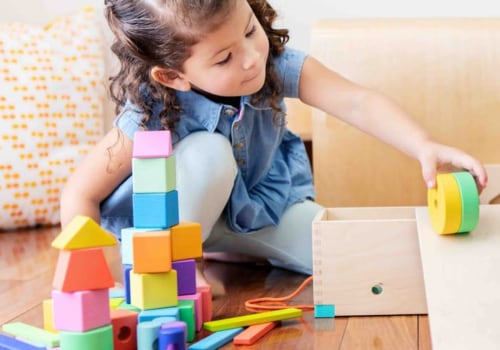As an expert in child development and toy safety, I have seen many parents struggle with keeping their children's toys clean. And when it comes to wooden toys, the cleaning process can be even more daunting. But fear not, I am here to guide you through the proper way to clean wooden toys without damaging them or compromising your child's health.Wooden toys are a popular choice for parents due to their safety, durability, and natural antibacterial quality. However, they are also porous and require a different cleaning process than other materials such as fabric, plastic, or metal.
Unlike plastic toys that can harbor germs for up to 24 hours, wooden toys are less likely to be affected by bacteria. But that doesn't mean they don't need regular cleaning.When it comes to soft toys that are not machine washable, a simple solution of baking soda and water can help refresh them. But what about those wooden blocks and toys that your child loves to play with every day? Here's what you need to know.First and foremost, always check the manufacturer's care instructions before cleaning any wooden toy. They may have specific recommendations for their products that you should follow.
In general, wooden toys can be easily cleaned with natural solutions that you probably already have in your kitchen.White vinegar and water make a great natural cleaning solution for wooden toys. Simply mix equal parts of vinegar and water in a spray bottle and use it to wipe down the toys. You can also use a clean, damp sponge for rougher surfaces without the risk of damaging the wood.But what about those pesky bath toys that seem to always have mold growing inside? Silicone toys are much easier to clean than wood and can even be put in the dishwasher. Just make sure they are labeled as dishwasher safe before doing so.
If not, you can hand wash them with hot water and mild dish detergent or boil them in water for one minute. However, avoid using household sterilizers or steam as they are not recommended for cleaning silicone.It's important to note that you don't need to clean your child's toys every day, especially if they are not used intensively or shared with other children. However, during cold and flu season, it's a good idea to clean them more regularly to prevent the spread of germs.When it comes to painted wooden toys, avoid putting them in the dishwasher or cleaning them in the bathroom. The heat and moisture can cause the paint to peel or fade.
Instead, use a damp cloth with mild soap to wipe them down.If your child is sick, it's crucial to wash their toys regularly to prevent the spread of germs. And don't forget about stuffed animals! If they can't be washed in the machine, you can use baking soda to clean them. Simply sprinkle baking soda on the toy, let it sit for a few hours, and then vacuum it off.In conclusion, wooden toys are a great choice for children's playthings due to their safety and durability. But they do require regular cleaning to keep them in good condition and prevent the spread of germs.
Remember to always check the manufacturer's care instructions and use natural cleaning solutions such as vinegar and water. And if all else fails, a little bit of baking soda can go a long way in keeping your child's toys clean and safe.I hope this article has been helpful in guiding you through the proper way to clean wooden toys. If you found it interesting and informative, please consider sharing it with other parents who may benefit from this information.



